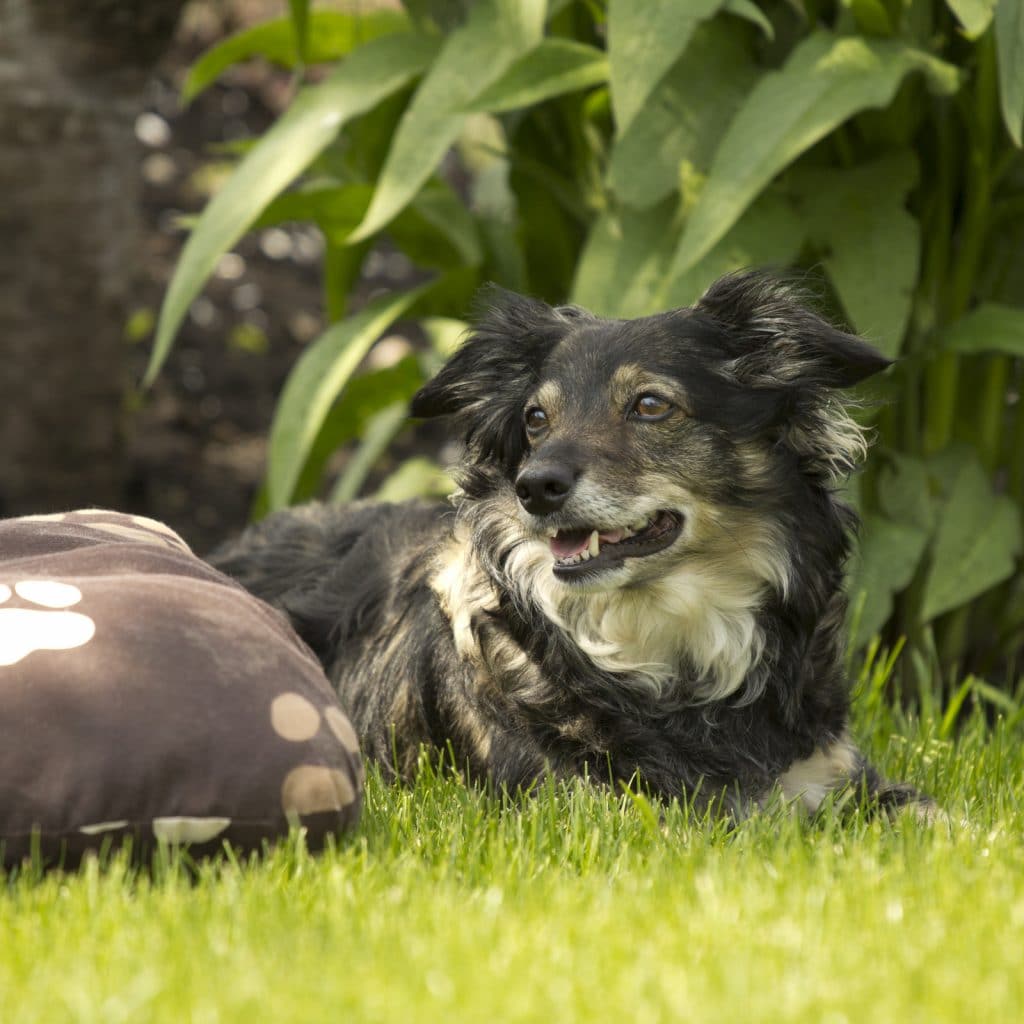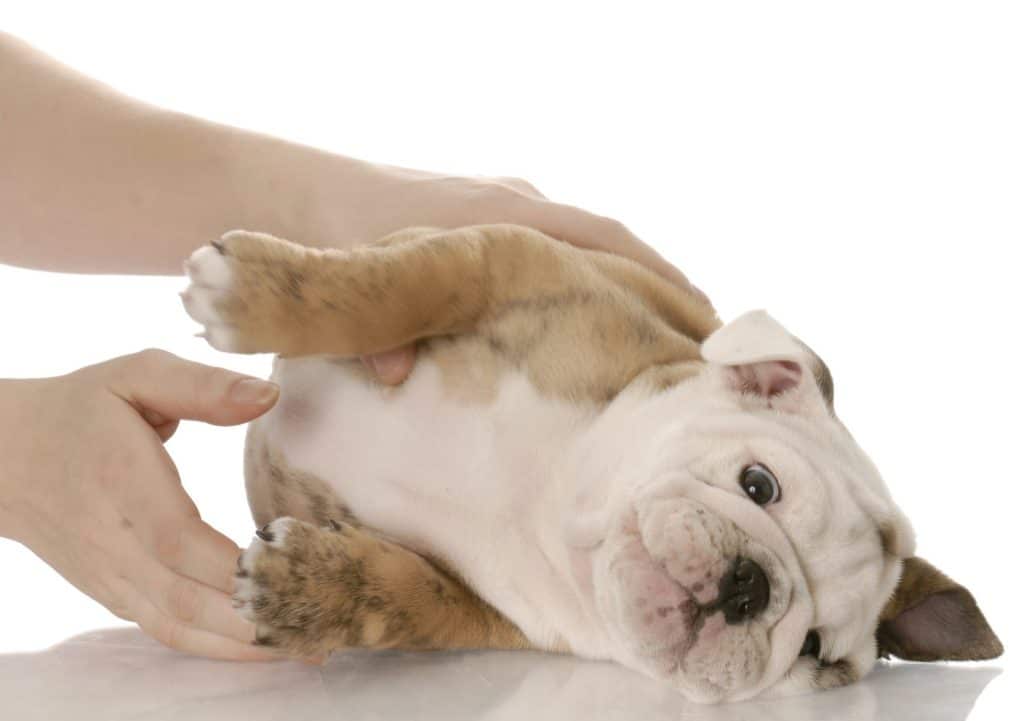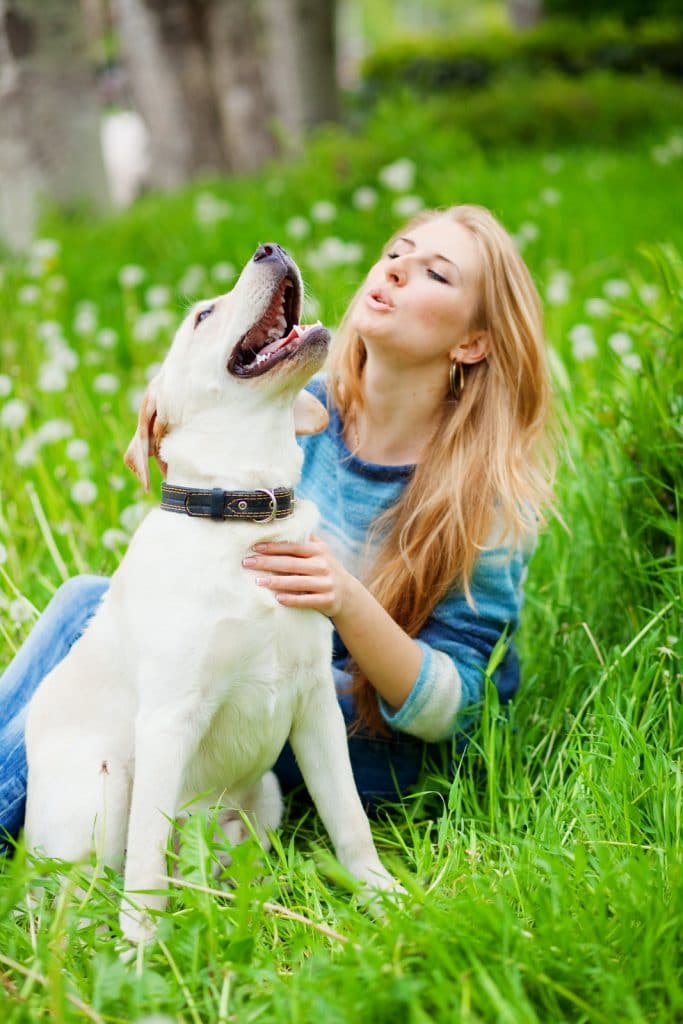![]()
HeelBoyHeel is reader supported. When you buy through any link on our site, we may earn an affiliate commission, but never at any extra cost to you.

Dogs and bee stings and how to deal with them
Once the weather gets warm, it’s great for you and your dog to get outside and enjoy running around and playing outdoors. But one of the perils is that your dog might pick up fleas or other parasites – or get stung by a bee or other stinging insect. Dogs are curious by nature and usually don’t realise there is any threat from insects, and bees won’t always appreciate the intrusion, no matter how friendly the intention is 🙂
Most of the time, bee stings or wasp stings are not serious and only cause mild irritation, and your dog will recover from a sting quickly without any real issues.
But with dogs, just as with humans, there is always the risk of an allergic reaction, so you do need to keep an eye on them just to be sure – especially if your dog has any history of having any sort of anaphylactic reaction in the past.
If your furry friend is unlucky enough to be stung by a bee, there are some things you can do to get their tail wagging again.

How Do You Know If Your Dog Has Been Stung?
There are lots of different ways that a dog will let you know they were stung by a bee. For instance, they may yelp or begin licking the area that was stung. If a paw was stung, it might feel tender – causing them to limp around to avoid pain.
Bee stings also tend to swell up, so you might see your dog with a comically large muzzle or eyelid.
There are various signs, including
- Sudden whining
- Holding up a paw (if stung on the paw)
- Biting or nuzzling at the spot where the sting went in
- Excessive drooling
- Pawing at the face or mouth (especially if stung in the mouth)
- Swelling, or red itchy skin
So if this does happen to you, here’s what to do if your dog is stung by a bee, wasp or other stinging insect.
1. Identify Where The Sting Is At

The first thing to do is to identify exactly where your dog has been stung. The most common spots for bee stings on dogs are the mouth, the face, and the pads of the feet.
Try to keep your dog calm as you identify the sore area – use the signs above to pinpoint exactly where the sting is at.
2. Remove The Stinger
If you find that there is a stinger still stuck in your dog’s skin, remove it as soon as you can. This does not apply to wasp stings, only bees leave the stinger in it’s victim. The venom sac attached to the stinger can inject venom for minutes after it has been removed from the bee, so the quicker you can remove it, the less pain and discomfort your dog will suffer.
But you need to be careful not to squeeze the venom sac – if you do, you will ‘inject’ the rest of the venom, which is the last thing you want.
So only use tweezers ads a last resort. The most effective way to remove a bee sting is to simply scrape the stinger out with a credit card, or a piece of cardboard – or even just using your finger nail if you have nothing else.
3. Treat The Area Stung
Stings are no fun, so it is important to reduce any pain that your dog may be feeling at the moment.
The same strategies you would use on yourself if you get stung apply to your dog.

Soothe the area around the sting by bathing it in water.
If you have anything suitable to hand, neutralise the sting – apply bicarbonate of soda to neutralise bee stings (which are acidic) or vinegar if it is a wasp sting (which are alkaline).
Then place a cold object, like an ice pack, a bag of frozen vegetables or cold damp towel on the sore area for around 10 minutes to reduce the swelling and pain.
If your dog suffers an allergic reaction or severe swelling, contact your vet for advice – see 4 below for more details.
Can I give my dog antihistamines for bee stings?
You will probably see that some people suggest giving dogs your own antihistamines if they have been stung by a wasp or a bee – but you should only ever give your dog antihistamines after getting professional advice.
Some antihistamines intended for human use are safe for dogs, but some are not and can make them seriously ill, or even be fatal, so never give your dog antihistamines (or any other medication) without contacting the experts first.
You can also get antihistamines for dogs online, but be sure you buy from a reputable vendor – for example, Chewy.com has a pharmacy section with full range of antihistamines for dogs
4. Keep an Eye Out for Allergic Reactions
Like people, some dogs may have allergic reactions to bee stings. If this is your dog’s first time getting stung by a bee, you will not know how their body will react to the venom.
Signs your dog might be having an allergic reaction include
- Difficulty breathing
- Swelling of the mouth, throat, eyes or ears
- Vomiting or diarrhoea
- Excessive drooling
- Having a seizure or a fit
If your dog displays any of these symptoms, contact your veterinarian immediately. After explaining your dog’s symptoms to the vet, they may suggest care that can be done right on the spot or they may ask you to bring the dog to their clinic.
5. Prepare For The Next Time
Bees and other stinging insects are a part of life in the outdoors, and are not a reason to keep your dog indoors. Dogs need exercise! But you can take some precautions to reduce the risk of your dog being stung.
Particularly if your dog has displayed serious symptoms in the past, they will likely have a serious reaction in the future. If this is the case, ask your dog’s veterinarian for advice and medication that you can carry with you in the event that your dog gets another bee sting.
Generally, try to steer your dog away from areas where bees like to frolic – bees are particularly attracted to flower beds, wildflowers, and fruits and vegetable plots, so if possible, keep your dog back from these where you can.
Always avoid beehives – honey bees will aggressively protect their hive from any potential intruder, and multiple stings can be particularly dangerous. If you have a hive in your garden, keep it fenced off so that your dog cannot get too close.
Conclusion

Dogs need to be outdoors, and during the warm weather months bees are unavoidable. So take precautions, and if your dog does have a run-in with a bee, the most important thing is to keep calm.
Follow the steps above, and soon you will be back to playing fetch and enjoying the sunshine 🙂